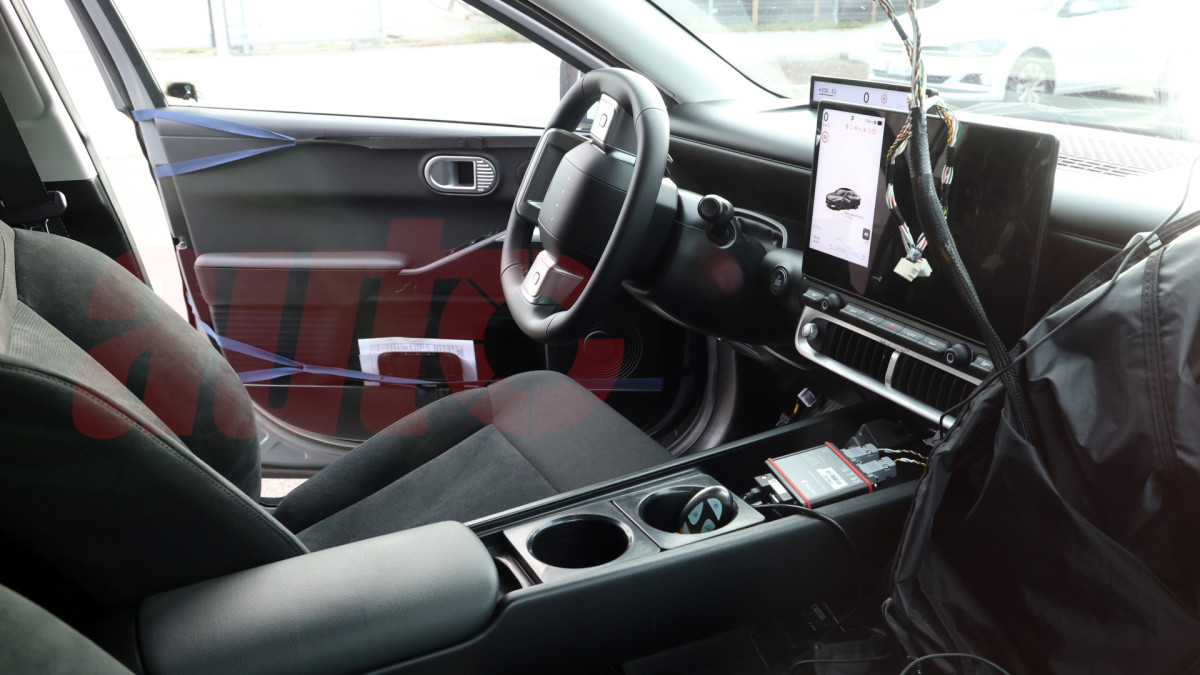
The Hyundai Veloster lived a relatively short life, only being produced from 2011-2022, but now, it’s being reincarnated in electric form and with a new name. Spy photographers have captured the upcoming Ioniq 3 in Europe, and its profile is certainly similar to that of the oddball Veloster. This time around, though, rather than featuring an asymmetrical door configuration and a 2.0-liter four-cylinder combustion engine, the Ioniq 3 will have four conventional doors and an electric powertrain. It’ll also have a Tesla-like infotainment screen, and these spy shots give us a closer look at the PLEOS setup, which, thankfully, will integrate physical controls.
PLEOS Infotainment Setup Will Offer Tactility
SH Proshots/Autoblog
Like Tesla, the Ioniq 3 will have a large, landscape-oriented touchscreen display in the center of the dash, but unlike Tesla, physical buttons will reside below for the climate controls, hazard buttons, and seat ventilation. Two physical knobs also exist, likely for the media system, and the steering wheel has some real buttons, too. Behind the squared wheel, a narrow horizontally aligned screen sits within the eyeline as a driver information display. Outside, the hatchback shows its relation to other members of the Ioniq family with a full-width lightbar on either end of the vehicle. The front bears a resemblance to the Ioniq 6, with the rear being particularly interesting due to a prominent spoiler sitting below the rear glass. With extensive camouflage still covering the body, the only other design elements that we can see clearly are some reflectors in what we assume will be a sort of faux diffuser panel, and the wheel arches bulge somewhat. We can also see a set of conventional door handles, which is good for safety and for keeping costs down, which is particularly important for a compact car.
What To Expect Beneath The Skin
SH Proshots/Autoblog
The Hyundai Ioniq 3 is expected to be available with two battery options: a 58.3 kWh battery and an 81.4 kWh battery, each of which will be supported by a 400-volt electrical system to keep costs down. The former is expected to deliver up to 260 miles of range, while the latter should give owners 365 miles between charges, both figures being calculated on the WLTP cycle. That brings us to availability: unfortunately for us, the Ioniq 3 will be produced in Turkey, which means it’s off limits to America. Perhaps someday, with enough demand, Hyundai could manufacture the Ioniq 3 in the U.S., potentially making a compelling alternative to the Chevrolet Bolt.
SH Proshots/Autoblog



